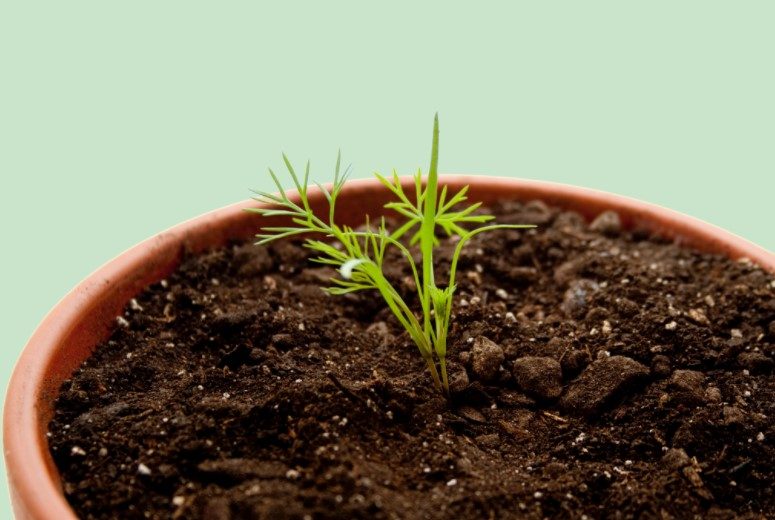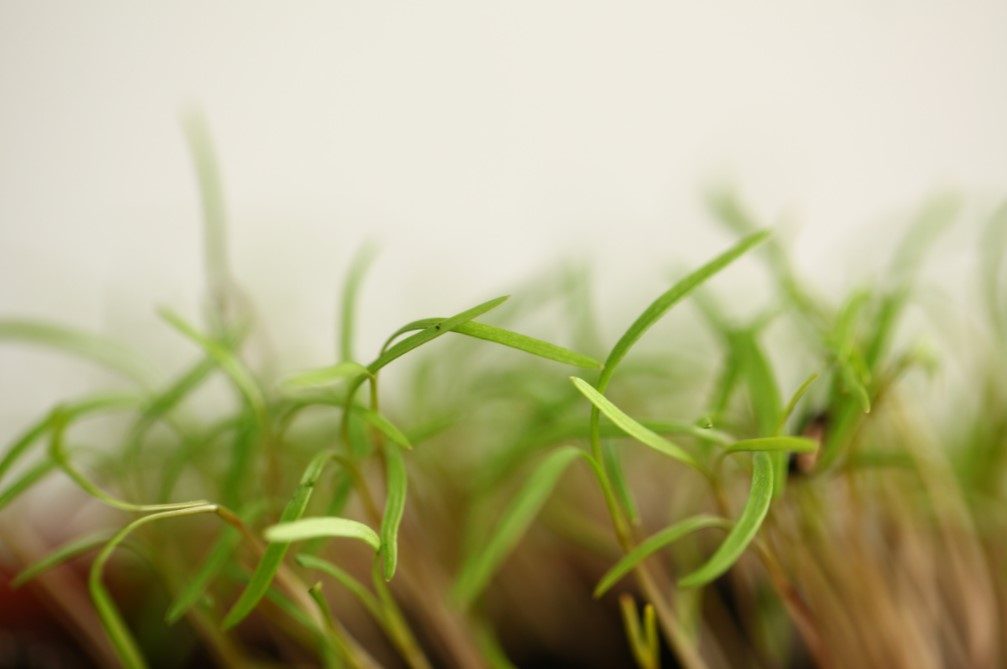Those small Christmas-y trees on top of your salad? Yep, I’m definitely talking about dill! As an amazing ingredient that has been featured in Asian and European cuisines for centuries, dill never fails to add more flavor to our food, even if you just put it in a pinch.
Finding fresh dill shouldn’t be a problem all year-round, although they’re usually more accessible in spring and early summer.
Fun fact: dill is related to celery and an annual self-seeding plant. If you’re interested in having this one right in your garden, here’s our guide on how to grow dill and other related information.
Let’s dive straight into the important point because I got to admit: dill may be small, but they can be a little bit tricky to navigate if you’re a first-timer in planting this herb at home.
In this post
Varieties of Dill
Like any other plants or herbs, dill comes in several varieties that you can choose according to your needs, environmental conditions, etc.
Some popular varieties include:
- Fernleaf dill: a compact option for home gardeners because it grows 30 to 46 centimeters (12 to 18 inches) tall, shorter than typical dill that grows to a height of 61 to 121 centimeters (2 to 4 feet),
- Ella dill: a dwarf dill variety for a patio herb garden, making it great for container and hydroponic growing,
- Greensleeves dill: a high yielding dill that’s resistant to bolting and super easy to grow,
- Dukat dill: a noticeably large, lush dill foliage with a strong flavor, and
- Bouquet dill: a versatile dill with amazing fragrance and visuals, making it a wonderful addition to summer bouquets.
When to Plant Dill

To know how to grow dill is to know the best time to plant the herb first. According to where you live, you have to consider the soil temperature first before sowing the seed to the ground.
The good news is: dill can grow fairly well in poor soil conditions, though if it’s possible, loamy, sandy, or drained soil with natural or slightly acidic pH levels (5.5 to 6.5) will help it grow better.
On the other hand, the soil temperature is the one you should pay attention to; it should be between 15 and 21°C (or 60 and 70°F) will present the best germination results.
It’s hence recommended to start planting dill after the snow frost has melted in spring and before mid-summer.
After all, the seeds should be sown directly into the soil. By following these principles, you can expect seedlings to appear in about two weeks
Where to Plant Dill

Wait, didn’t we already cover this matter? You know, soil that’s neither too hot nor too cold? Well, consider this extended information; you’re going to ensure you plant dill in full sun, or it’s bye-bye.
Moreover, ensure a good draining system for your site, which has to be rich in organic matter. If you already have onions or cabbages, you can plant dill next to these two.
Except for carrots, though, because these two plants are closely related and may cross-pollinate. Dill is also a poor companion plant for potatoes, lavender, fennel, eggplant, chili, and bell peppers.
Protect your dill from strong gusts of wind by creating a designated shelter or keeping it indoors (but still well-lit, even if it can tolerate light shade). Dill can survive temperatures down to -3°C (25°F).
How to Plant Dill

Welcome, first-time dill gardeners! You can start your dill planting journey from containers, both indoors and outdoors.
- Select a deep container to house the plant. Dill is going to have long roots, so you should also keep it well-watered and use aged compost.
- If the container is inside, make sure the plant is exposed to direct sunlight at least 5 to 6 hours a day. Prepare a stake to support your dill if necessary.
- If you’re doing it indoors, expect the seed to be ready for transplant in about 4 to 6 weeks.
- If you’re doing it outdoors, gather your dill seeds before sowing them approximately 0,6-cm (¼-inch) deep and 46 cm (18 inches) apart on the ground.
- Once it reaches two weeks, be ready to greet the germinated young dill plants!
How to Care for Dill Plants

The hardest part in gardening is actually the part where we take care of them, in my opinion.
You can follow all the best procedures in growing your favorite plants, but the jury’s still out on how you care for them.
Here’s all you need to know about how to grow dill successfully for a long time.
1. Fertilizing
As with most herbs, dill doesn’t need frequent fertilizing. However, you can apply a 5-10-5 fertilizer once in late spring, which should be enough.
You can also choose a liquid fertilizer at one-half the label recommended strength every four to six weeks.
Spread the fertilizer on the surface or apply it around the sides of the plant or to the soil. In other words: try not to apply it directly with the seed.
2. Harvesting
Once your dill develops 4 or 5 leaves (which means a whole feathery sprig), you can prepare to harvest them.
For a large harvest, aim for the time before the plants begin to flower since its foliage will be at its best flavor.
Unfortunately, you might have to wait a little bit longer to harvest dill seeds since you need to wait for your dills to flower first in about two months before letting the seeds develop and dry on.
3. Storage
Fresh dill always serves the most potent flavor after harvest. You can dry it for future use, but I wouldn’t recommend it because dill doesn’t keep much of its flavor when you do it that way. However, it still freezes well.
For use in a day or two, wrap the stems of fresh dill weed in plastic and put them in the refrigerator. For longer storage time, pour water onto a jar or glass before placing that bunch of dill inside and closing the top with plastic.
If you’ve been on Instagram like me, there are many good tricks to store your herbs. Nowadays, you can find people chop their dill into fine pieces before adding enough water just to turn them into a paste.
It’ll be later put neatly into an ice cube tray for a good, solid freeze, which can last for months. Anytime you want that burst of fresh dill flavor, just pop them out and toss them into your stews or soups.
Dill’s Plant Companions
If this is your first time reading the phrase “plant companions” or “companion planting,” I got you covered.
In a nutshell, plant companions are those you want to keep near what you’re currently planting, because they might add more benefits to that plant or maximize its growth or both.
It’s a win-win situation all over, and why plant one if you can do two or more?
Here are several plants you can consider planting alongside your dill:
1. Asparagus
With the scientific name Asparagus officinalis, I won’t blame you if you’re not too familiar with this one.
Widely found in Europe and parts of Asia, they are the young shoots of a cultivated lily plant, with firm and snappy structure when still raw.
Planting asparagus and dill side by side will help repel insects like spider mites, aphids, and other detrimental insects.
2. Brassicas
Brassicas may be more familiar for you when I talk about Swiss chard, kale, Brussels sprouts, cauliflower, kohlrabi, and broccoli.
These plants can be benefited from having dill by their side, because it can improve their health while repelling pests such as cabbage loopers, moth, and worms that just love brassicas immensely like us.
3. Chervil
Often mistaken as parsley, the mild-flavored chervil can also be dill’s companion plant in terms of attracting parasitic wasps that prey on pests.
Alongside other vegetables I mention here, planting dill and chervil together helps amplifying that advantage in a way, hence presenting enhanced protection to your veggies.
4. Cucumber
For a plant that has been cultivated for around 3,000 years, cucumbers are supposed to be one of the easiest plants you can grow alongside your dill, which will help attract beneficial insects that prey on cucumber pests like cucumber beetles.
5. Tomatoes
Lastly, we have tomatoes that’ll work perfectly as dill’s plant companion since dill can support their health (and vice versa), all the while attracting predators of the tomato hornworm.
However, make sure to harvest your dill as soon as they mature, because dills can also diminish tomato growth at some points.
Conclusion
I hope the information on how to grow dill and other related information above can help you grow this amazing herb at home!
Besides providing amazing flavor to our cooking, dill has a series of benefits like a small amount of manganese, calcium, and vitamins A and C.
If you’re simply looking for a breath freshener, dill can also be your go-to ingredient. What kind of recipe featuring dill do you have in mind?

